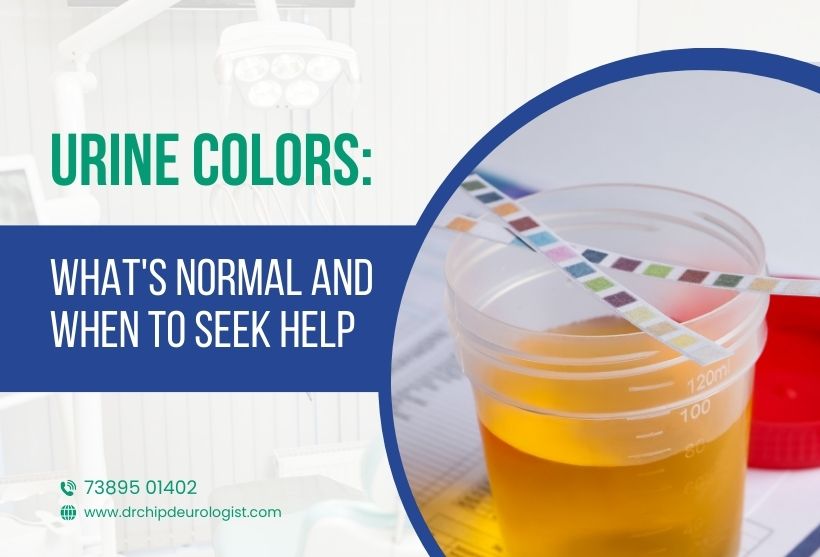Urine Colors: What's Normal And When To Seek Help

Your body has its own way of sending signals about your health—sometimes through energy levels, skin changes, or even the color of what you drink and eat. But did you know that the color of what you flush away can also tell a story about your well-being?
If you ever notice unusual or persistent urine color changes, it’s best to consult a doctor to rule out any health concerns. Here’s a guide to help you understand what different urine colors mean and when you should seek medical advice.
The Science Behind Urine Colors
Urine gets its color from urochrome, a pigment produced when your body breaks down hemoglobin (the protein in red blood cells). The more concentrated your urine, the darker it appears. Hydration, diet, medications, and health conditions all influence urine color, making it a helpful indicator of your well-being.
But what does each color mean? Let’s break it down.
The Urine Color Code: Decoding Each Shade
Clear/Pale Yellow: Overhydration or Healthy Hydration?
If your urine is almost colorless, you might be overhydrated. While drinking plenty of water is good, excessive water intake can dilute essential electrolytes in your body. Your urine should be light straw-colored—a sign of proper hydration.
Bright Yellow: Vitamin Overload?
A bright or fluorescent yellow urine color is usually harmless and caused by excess B vitamins (especially riboflavin/B2) from supplements. Your body flushes out what it doesn’t need, giving urine this vibrant hue.
Dark Yellow/Amber: Is It Dehydration or Something Serious?
Dark yellow or amber-colored urine is often a sign of dehydration. If increasing water intake doesn’t lighten your urine, it might indicate a liver issue that requires medical attention, like jaundice.
Orange: Medications, Liver Issues, or Too Many Carrots?
- Certain medications (e.g., rifampin, warfarin, or high-dose vitamin C) can turn urine orange.
- Eating large amounts of carrots or foods high in beta-carotene can also cause an orange hue.
- In some cases, orange urine is a sign of bile duct issues or liver disease—if you notice this color persistently, consult a doctor.
Green: Rare but Possible—Food Dyes or Bacterial Infection?
- Food dyes (found in candies, sodas, or artificial coloring).
- Medications (such as antidepressants or anesthetics).
- Pseudomonas bacteria cause urinary tract infections (UTIs). If green urine is accompanied by discomfort or pain, seek medical help.
Red/Pink: Beets, Berries, or a Medical Emergency?
- Beets, blackberries, or rhubarb can temporarily cause red urine (harmless).
- If you haven’t consumed any red-colored foods and notice red or pink urine, it could indicate blood in the urine (hematuria)—a potential sign of kidney stones, infections, or bladder cancer.
- If red urine persists, consult a doctor immediately.
Brown: Liver/Kidney Concerns
- Dark brown urine can result from severe dehydration.
- It may also signal liver diseases, such as hepatitis or cirrhosis, where bile leaks into the urine.
- Seek medical evaluation if your urine turns brown and doesn’t improve with hydration.
Cloudy or Foamy: Infection, Kidney Issues, or High Protein Intake?
- Cloudy urine can be a sign of UTIs, kidney infections, or excessive white blood cells.
- Foamy urine may indicate high protein levels, a possible sign of kidney disease.
- If cloudiness or foam persists, it’s time to consult a doctor.
When to See a Doctor
While temporary changes in urine color can result from diet or hydration, certain symptoms require medical attention, including:
- Persistent red, brown, or orange urine (especially with pain or fever).
- Cloudy or foamy urine that doesn’t clear up.
- Green urine with urinary discomfort (possible bacterial infection).
- Dark yellow urine despite drinking enough fluids (possible liver issue).
- Frequent urine color changes without an obvious cause.
If you experience any of these, Dr. Chipde in Indore can help diagnose the underlying issue and guide you toward appropriate treatment.
Takeaways: Keeping Your Urine (and Body) Healthy
- Stay hydrated to maintain normal urine color.
- Monitor changes in urine color, consistency, or smell.
- Be mindful of medications and foods that can affect urine color.
- Seek medical attention if urine changes persist, especially with pain or discomfort.
If you notice unusual urine colors that don’t resolve with hydration or diet changes, consult a doctor to rule out potential health issues.
Your urine is a powerful health indicator—paying attention to it can help you stay ahead of medical concerns and maintain good overall well-being!
